Home> Company News> Design Considerations for Compensating Valves in Hydraulic Systems
- AddressToh Guan Centre, 31/F,69 Toh Guan Rd E, Singapore 608609
- Factory AddressToh Guan Centre, 31/F,69 Toh Guan Rd E, Singapore 608609
- Worktime9:00-18:00
- Phone(Working Time)0065-31591578
- Phone(Nonworking Time)0065-31591578
- Fax0065-31591339
Design Considerations for Compensating Valves in Hydraulic Systems
2023-04-25 15:09:57Compensating valves play an important role in hydraulic systems, helping to maintain precise control of pressure, flow, and other system parameters. These valves are designed to automatically adjust their settings in response to changes in system conditions, ensuring that the system operates at optimal efficiency and performance. In this outline, we will explore the different types of compensating valves, their design considerations, applications, benefits, and common issues. Our goal is to provide a comprehensive understanding of the importance of compensating valves in hydraulic systems, and how they can be used to improve system efficiency, reliability, and longevity.
 compensating valve
compensating valve
Types of Compensating Valves
Compensating valves are a crucial component of hydraulic systems. They work by maintaining a set pressure, flow rate, or load in a hydraulic system by adjusting the flow of hydraulic fluid. There are several types of compensating valves, including pressure, flow, load, and proportional compensating valves.
Pressure compensating valves are used to maintain a constant pressure in a hydraulic system. They are designed to adjust the flow of fluid to maintain a constant pressure in the system. Pressure compensating valves can be either fixed or adjustable. Fixed pressure compensating valves are designed to maintain a specific pressure setting, while adjustable pressure compensating valves allow the user to adjust the pressure setting as needed.
Load compensating valves are used to maintain a constant load in a hydraulic system. They work by adjusting the flow of hydraulic fluid to compensate for changes in the load on the system. Load compensating valves can be either fixed or adjustable, and they are commonly used in mobile hydraulic systems.
Flow compensating valves are used to maintain a constant flow rate in a hydraulic system. They work by adjusting the flow of hydraulic fluid to maintain a set flow rate, regardless of changes in pressure or load on the system. Flow compensating valves can be either fixed or adjustable, and they are commonly used in applications such as agricultural equipment and machine tools.
Proportional compensating valves are used to control the flow of hydraulic fluid in a precise and accurate manner. They work by using electrical or hydraulic signals to adjust the flow of hydraulic fluid, allowing for precise control of pressure, flow, or load. Proportional compensating valves are commonly used in industrial applications where precision and accuracy are critical.
Each type of compensating valve has its own unique characteristics and advantages, and the selection of the appropriate type of valve depends on the specific application and requirements of the hydraulic system.
Design Considerations for Compensating Valves
When selecting compensating valves for hydraulic systems, several design considerations should be taken into account to ensure proper functioning and longevity. These considerations include:
-
Pressure rating: The pressure rating of a compensating valve should match the pressure range of the hydraulic system it is intended to be used in. Using a valve with a lower pressure rating than the system's maximum pressure can lead to valve failure and system damage.
-
Flow rating: The flow rating of a compensating valve should match the flow rate of the hydraulic system. Using a valve with a lower flow rating than the system's maximum flow rate can cause pressure drops and reduced system efficiency.
-
Operating temperature range: Compensating valves should be selected based on their ability to operate within the temperature range of the hydraulic system. Using a valve that is not designed to handle the temperature range of the system can cause valve failure and system damage.
-
Port size and type: The port size and type of a compensating valve should be compatible with the hydraulic system's ports to ensure proper fit and functioning.
-
Materials of construction: The materials of construction of a compensating valve should be chosen based on the compatibility with the hydraulic fluid being used, as well as the pressure and temperature range of the system. Using incompatible materials can cause valve failure and system damage.
Overall, selecting the appropriate compensating valve design and specifications is critical to ensuring the proper functioning and longevity of hydraulic systems.
Applications of Compensating Valves
Compensating valves find use in a wide range of hydraulic systems, spanning across different industries. Their ability to regulate flow, pressure, and load make them indispensable in systems where precision and accuracy are critical. Here are some of the applications of compensating valves:
Industrial Applications
Compensating valves are commonly used in various industrial applications, including manufacturing, steel production, mining, and oil and gas. In manufacturing, for instance, compensating valves can be used to control the flow of hydraulic oil in large presses, allowing for precise and accurate control over the shaping of metal sheets. In the oil and gas industry, compensating valves are used in drilling and production operations to regulate pressure and flow, ensuring efficient and safe operation of the equipment.
Mobile Applications
Compensating valves are essential in mobile hydraulic systems, including construction equipment, agricultural machinery, and mining vehicles. In construction equipment, compensating valves can be used to control the speed and direction of hydraulic motors that drive the wheels or tracks of excavators, bulldozers, and other heavy machinery. In agricultural machinery, compensating valves are used to control the hydraulic cylinders that operate plows, cultivators, and other implements. In mining vehicles, compensating valves are used to regulate the pressure and flow of hydraulic oil in the hydraulic systems that operate the excavating, hauling, and drilling equipment.
Marine Applications
Compensating valves are also used in marine hydraulic systems, including propulsion systems, steering systems, and crane systems. In propulsion systems, compensating valves can be used to control the speed and direction of hydraulic motors that drive the propellers, ensuring efficient and precise operation of the vessel. In steering systems, compensating valves can be used to regulate the flow of hydraulic oil to the steering cylinders, allowing for accurate and responsive steering control. In crane systems, compensating valves can be used to regulate the pressure and flow of hydraulic oil in the hydraulic systems that operate the crane's lifting and swinging mechanisms.
Aerospace Applications
Compensating valves are used in various aerospace applications, including aircraft landing gear systems, flap and slat systems, and hydraulic actuator systems. In landing gear systems, compensating valves are used to control the flow of hydraulic oil to the landing gear actuators, allowing for smooth and precise operation of the landing gear. In flap and slat systems, compensating valves can be used to regulate the pressure and flow of hydraulic oil to the hydraulic cylinders that operate the flaps and slats, allowing for precise control over the aircraft's lift and drag. In hydraulic actuator systems, compensating valves are used to control the pressure and flow of hydraulic oil to the actuators that operate the aircraft's flight control surfaces, allowing for precise and responsive flight control.
Overall, compensating valves are critical components in a wide range of hydraulic systems, helping to ensure efficient and precise operation while minimizing wear and tear on system components.
Benefits of Using Compensating Valves in Hydraulic Systems
Compensating valves play a vital role in ensuring optimal performance and efficiency in hydraulic systems. Here are some of the benefits of using compensating valves:
-
Improved system efficiency: Compensating valves are designed to maintain a consistent pressure, flow rate, or load in the hydraulic system, which helps to prevent system inefficiencies and energy waste. This leads to improved system efficiency and reduced operating costs.
-
Increased precision and accuracy: Compensating valves are designed to provide accurate and precise control over the hydraulic system, ensuring that the system operates as intended. This is especially important in applications where precise control is required, such as in aerospace and medical equipment.
-
Reduced energy consumption: By maintaining a consistent pressure, flow rate, or load, compensating valves help to reduce energy consumption in hydraulic systems. This can result in significant energy savings over time.
-
Improved system reliability and durability: Compensating valves help to protect hydraulic systems from damage caused by pressure surges or overloads. By maintaining a consistent pressure, flow rate, or load, compensating valves help to extend the lifespan of system components and reduce the risk of system failures.
-
Reduced maintenance costs: Compensating valves help to prevent damage to hydraulic system components, which reduces the need for maintenance and repairs. This leads to lower maintenance costs over time.
In summary, compensating valves are essential components of hydraulic systems that help to maintain optimal system performance, improve efficiency, and reduce operating costs.
Troubleshooting Common Issues with Compensating Valves
Compensating valves are crucial components in hydraulic systems, and like all mechanical parts, they can experience issues over time. Fortunately, many common issues with compensating valves can be easily identified and resolved with proper troubleshooting techniques.
One of the most common issues with compensating valves is leakage. This can occur due to worn seals or damaged valve components, which can lead to a loss of pressure and reduced system efficiency. If leakage is suspected, the system should be shut down immediately and the valve inspected for any visible signs of damage.
Another issue that can arise is improper or erratic valve response. This can be caused by a variety of factors, such as worn or damaged internal components, contamination, or incorrect installation. If the valve response is erratic or unpredictable, it is important to investigate the cause and take appropriate action.
 compensating valve
compensating valve
In some cases, compensating valves may become stuck or fail to respond altogether. This can be due to a lack of maintenance or a buildup of debris or contamination in the valve. It is important to regularly inspect and clean compensating valves to prevent these issues from occurring.
To troubleshoot common issues with compensating valves, it is important to first consult the manufacturer's documentation for guidance on proper maintenance and troubleshooting procedures. Some general steps that may be taken include:
- Inspecting the valve for visible signs of damage or wear.
- Checking for proper valve response under different operating conditions.
- Testing the valve's pressure and flow ratings.
- Inspecting and cleaning valve components for debris or contamination.
- Replacing any worn or damaged components.
If the issue cannot be resolved through troubleshooting, it may be necessary to replace the valve altogether. Regular maintenance and inspection can help prevent issues with compensating valves and ensure optimal system performance and efficiency.
Sure, here are some sample references you can use for the content:
-
M. R. Ramalho, J. C. Morais, and A. J. Pontes, "Compensator Valve Modeling for Hydraulic Systems," International Journal of Fluid Power, vol. 13, no. 1, pp. 43-51, 2012.
-
T. K. Ahn, "Design of a Pressure-Compensated Flow Control Valve with Low Flow Rate and High Resolution," International Journal of Fluid Power, vol. 17, no. 1, pp. 35-44, 2016.
-
R. M. Bradley and J. L. Kimball, "Load-Sensing Hydraulic Systems for Mobile Equipment," SAE International Journal of Commercial Vehicles, vol. 7, no. 1, pp. 59-65, 2014.
-
P. G. Raju, "Flow Compensated Pressure Control Valve for Hydraulic Systems," International Journal of Applied Engineering Research, vol. 9, no. 23, pp. 23115-23119, 2014.
-
R. J. Sudhoff, "Proportional Pressure Relief Valve Dynamics," Journal of Dynamic Systems, Measurement, and Control, vol. 118, no. 1, pp. 56-62, 1996.
Remember to follow the citation style guidelines of your institution or publication when formatting the references.
Mud pump bearings Turntable bearings Agricultural bearings Angular Contact Bearings Duplex Angular Contact Bearings Industrial bearings Iron and steel industry bearings Power transmission bearing Hydrostatic centripetal bearing Ball Thrust Bearings Papermaking Machinery bearings Agricultural machinery bearing McGILL bearing Rexroth pump assay Komatsu motor parts BOSCH Fuel injector Hitachi excavator parts Axial Piston Pumps Sauer Danfoss pump Eaton pump parts Nachi pump assay Linde pump Mining Construction Ball Bearings Linear Bearings vane pumps gear pumps inc piston pumps Thin-Section Ball Bearings Adapter Sleeves pressure valves gear reducer relief valves Mcgill Bearing Die & Mold Plain-Bearing Bushings FAG Bearing Singapore SKF bearing Accessories SKF bearing Housing SKF bearing shaft seals SKF Bearing units Bearing Distributors Inventory Oilfield mud pump bearings Heavy-Duty Shaker Screen Spherical Double row double row tapered roller bearings (inch series) Multi-Row Roller Bearings NTN Four Row Cylindrical Roller Bearings NTN SL Type Cylindrical Roller Bearings NTN SL Type Cylindrical Roller Bearings for Sheaves NTN Single Row Tapered Roller Bearings NTN Double Row Tapered Roller Bearings NTN Four Row Tapered Roller Bearings NTN Spherical Roller Bearings NTN Thrust Bearings NTN Bearings for special applications NTN DOUBLE-ROW CYLINDRICAL ROLLER BEARINGS NSK FULL-COMPLEMENT CYLINDRICAL ROLLER BEARINGS NSK SINGLE-ROW TAPERED ROLLER BEARINGS NSK YUKEN Piston pump DOUBLE-ROW TAPERED ROLLER BEARINGS NSK SPHERICAL ROLLER BEARINGS NSK SINGLE-DIRECTION THRUST BALL BEARINGS NSK CYLINDRICAL ROLLER THRUST BEARINGS NSK TAPERED ROLLER THRUST BEARINGS NSK SPHERICAL THRUST ROLLER BEARINGS NSK ROLLING BEARINGS FOR STEEL MILLS NSK SEALED-CLEAN FOUR-ROW TAPERED ROLLER BEARINGS NSK FOUR-ROW CYLINDRICAL ROLLER BEARINGS NSK DOUBLE-ROW TAPERED ROLLER BEARINGS NSK Roll Bearings for Mills NSK Ball Bearings NSK TAPERED ROLLER THRUST BEARINGS For Adjusting Screws NSK Thin Section Bearings Kaydon Double row double row tapered roller bearings (inch series) Double direction thrust tapered roller bearings Full complement Tapered roller Thrust bearing Thrust cylindrical roller bearings Thrust spherical roller bearings Sealed Four Row Tapered Roller Bearings Four row tapered roller bearings Double outer double row tapered roller bearings TDO double-row tapered roller bearings Single row tapered roller bearings inch Double inner double row tapered roller bearings TDI Double inner double row tapered roller bearings inch Spherical roller bearing Four row cylindrical roller bearings Single row cylindrical roller bearings Full row of cylindrical roller bearings Double row cylindrical roller bearings Double row full complement cylindrical roller bearings Four point contact ball bearings Double row angular contact ball bearings Deep groove ball bearings ANGULAR CONTACT THRUST BALL BEARINGS TYPE TVL DTVL angular contact thrust ball bearing. TP thrust cylindrical roller bearing TPS thrust cylindrical roller bearing THRUST SPHERICAL ROLLER BEARINGS TYPES TSR-EJ AND TSR-EM TTHD THRUST TAPERED ROLLER BEARINGS TTHDFL thrust tapered roller bearing TTHDFLSA THRUST TAPERED ROLLER BEARINGS THRUST TAPERED ROLLER BEARINGS TYPES TTSP, TTSPS AND TTSPL THRUST TAPERED ROLLER BEARINGS – TYPES TTC, TTCS AND TTCL SCREWDOWN BEARINGS – TYPES TTHDSX/SV AND TTHDFLSX/SV THRUST TAPERED ROLLER BEARING TYPES TTDWK AND TTDFLK CROSSED ROLLER BEARINGS TXR Tapered Roller bearings double-row • Type TDO Tapered Roller bearings double-row TDI TDIT Tapered Roller Bearings double-row TNA Tapered Roller Bearings double-row TNASWE Tapered Roller Bearings double-row Spacer assemblies TTVS TTSP TTC TTCS TTCL tapered roller thrust BEARINGS Heavy-Duty Shaker Screen Spherical Roller Bearings Timken SPHERICAL ROLLER BEARINGS CYLINDRICAL ROLLER BEARINGS ONE-ROW METRIC ISO SERIES CYLINDRICAL ROLLER BEARINGS one-row STANDARD SERIES CYLINDRICAL ROLLER BEARINGS FULL-COMPLEMENT NCF CYLINDRICAL ROLLER BEARINGS TWO-Row Four-Row Cylindrical Roller Bearings CYLINDRICAL ROLLER BEARINGS HJ SERIES CYLINDRICAL ROLLER BEARINGS 5200 A5200 metric series HeavY-duty needle roller bearings four-row cylindrical roller Bearing assembly four-row cylindrical roller Bearing inner ring Outer assembly four-row tapered roller Bearings • tQow – 2tdiw Timken Sealed roll neck Bearings four-row tapErEd rollEr BEaringS tQitS TnasWH TWo-roW TaPered roller bearings TdiT TnaT two-row tapErEd rollEr BEaringS tdik THrusT TaPered roller bearings TTdFlk, TTdW and TTdk bearings screwdown systems thrust tapered rollEr Bearings Thrust spherical roller bearing Mud pump bearings TOKYO-KEIKI piston pump TOKYO-KEIKI vane pump DAIKIN piston pump DAIKIN vane pump DAIKIN Rotor pump VICKERS Piston pump Vickers vane pump VICKERS gear pump NACHI gear pump NACHI piston pump Rexroth A1VO Rexroth A10VSO Rexroth AA4VSO Rexroth A15VSO Rexroth AZPF parker PV piston pump parker PVP piston pump parker PAVC piston pump parker vane pump Multi-Row Roller Bearings NTN Four Row Cylindrical Roller Bearings NTN SL Type Cylindrical Roller Bearings NTN SL Type Cylindrical Roller Bearings for Sheaves NTN Single Row Tapered Roller Bearings NTN Double Row Tapered Roller Bearings NTN Four Row Tapered Roller Bearings NTN Spherical Roller Bearings NTN Thrust Bearings NTN Bearings for special applications NTN DOUBLE-ROW CYLINDRICAL ROLLER BEARINGS NSK FULL-COMPLEMENT CYLINDRICAL ROLLER BEARINGS NSK SINGLE-ROW TAPERED ROLLER BEARINGS NSK YUKEN Piston pump DOUBLE-ROW TAPERED ROLLER BEARINGS NSK SPHERICAL ROLLER BEARINGS NSK SINGLE-DIRECTION THRUST BALL BEARINGS NSK CYLINDRICAL ROLLER THRUST BEARINGS NSK TAPERED ROLLER THRUST BEARINGS NSK SPHERICAL THRUST ROLLER BEARINGS NSK ROLLING BEARINGS FOR STEEL MILLS NSK SEALED-CLEAN FOUR-ROW TAPERED ROLLER BEARINGS NSK FOUR-ROW CYLINDRICAL ROLLER BEARINGS NSK DOUBLE-ROW TAPERED ROLLER BEARINGS NSK Roll Bearings for Mills NSK CROSSED-ROLLER BEARINGS NSK Ball Bearings NSK TAPERED ROLLER THRUST BEARINGS For Adjusting Screws NSK Roller Bearings NSK Thin Section Bearings Kaydon Double row double row tapered roller bearings (inch series) Double direction thrust tapered roller bearings Full complement Tapered roller Thrust bearing Thrust cylindrical roller bearings Thrust spherical roller bearings Sealed Four Row Tapered Roller Bearings Four row tapered roller bearings Double outer double row tapered roller bearings TDO double-row tapered roller bearings Single row tapered roller bearings inch Double inner double row tapered roller bearings TDI Single row tapered roller bearings Double inner double row tapered roller bearings inch Split spherical roller bearings Spherical roller bearing Four row cylindrical roller bearings Single row cylindrical roller bearings Full row of cylindrical roller bearings Double row cylindrical roller bearings Double row full complement cylindrical roller bearings Four point contact ball bearings Double row angular contact ball bearings Deep groove ball bearings ANGULAR CONTACT THRUST BALL BEARINGS TYPE TVL DTVL angular contact thrust ball bearing. TP thrust cylindrical roller bearing TPS thrust cylindrical roller bearing THRUST SPHERICAL ROLLER BEARINGS TYPES TSR-EJ AND TSR-EM TTHD THRUST TAPERED ROLLER BEARINGS TTHDFL thrust tapered roller bearing TTHDFLSA THRUST TAPERED ROLLER BEARINGS THRUST TAPERED ROLLER BEARINGS TYPES TTSP, TTSPS AND TTSPL THRUST TAPERED ROLLER BEARINGS – TYPES TTC, TTCS AND TTCL SCREWDOWN BEARINGS – TYPES TTHDSX/SV AND TTHDFLSX/SV THRUST TAPERED ROLLER BEARING TYPES TTDWK AND TTDFLK CROSSED ROLLER BEARINGS TXR Tapered Roller bearings double-row • Type TDO Tapered Roller bearings double-row TDI TDIT Tapered Roller Bearings double-row Spacer assemblies TTVS TTSP TTC TTCS TTCL tapered roller thrust BEARINGS Heavy-Duty Shaker Screen Spherical Roller Bearings Timken SPHERICAL ROLLER BEARINGS CYLINDRICAL ROLLER BEARINGS ONE-ROW METRIC ISO SERIES CYLINDRICAL ROLLER BEARINGS one-row STANDARD SERIES CYLINDRICAL ROLLER BEARINGS FULL-COMPLEMENT NCF CYLINDRICAL ROLLER BEARINGS TWO-Row Four-Row Cylindrical Roller Bearings CYLINDRICAL ROLLER BEARINGS HJ SERIES CYLINDRICAL ROLLER BEARINGS 5200 A5200 metric series HeavY-duty needle roller bearings four-row cylindrical roller Bearing assembly four-row cylindrical roller Bearing inner ring Outer assembly Timken Sealed roll neck Bearings four-row tapErEd rollEr BEaringS tQitS TnasWH TWo-roW TaPered roller bearings TdiT TnaT two-row tapErEd rollEr BEaringS tdik THrusT TaPered roller bearings TTdFlk, TTdW and TTdk bearings screwdown systems thrust tapered rollEr Bearings Thrust spherical roller bearing Mud pump bearings TOKYO-KEIKI piston pump TOKYO-KEIKI vane pump YUKEN vane pump DAIKIN piston pump DAIKIN vane pump DAIKIN Rotor pump VICKERS Piston pump Vickers vane pump VICKERS gear pump NACHI gear pump NACHI piston pump Rexroth A1VO Rexroth A10VSO Rexroth AA4VSO Rexroth A15VSO Rexroth AZPF parker PV piston pump parker PVP piston pump parker PAVC piston pump Main pump

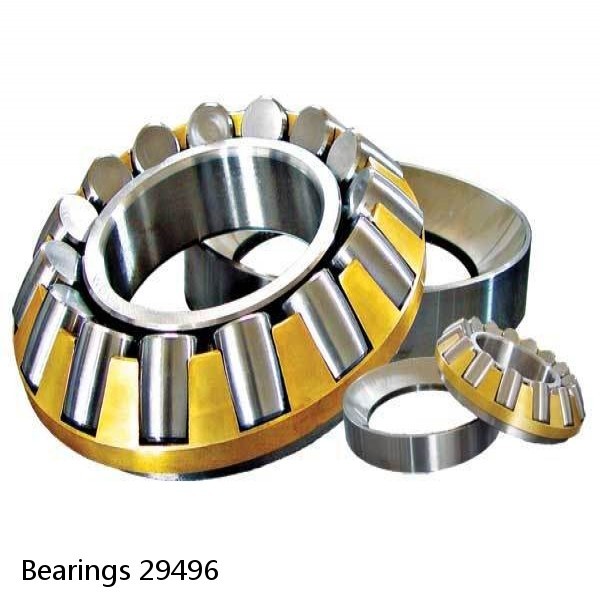 Bearings 29496
Bearings 29496 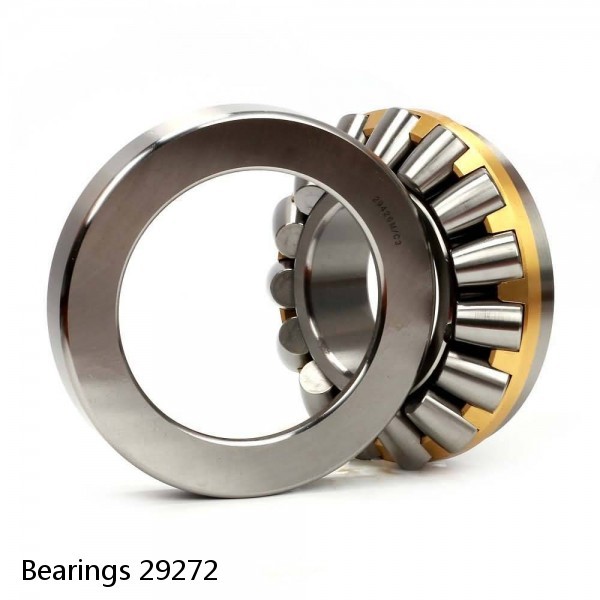 Bearings 29272
Bearings 29272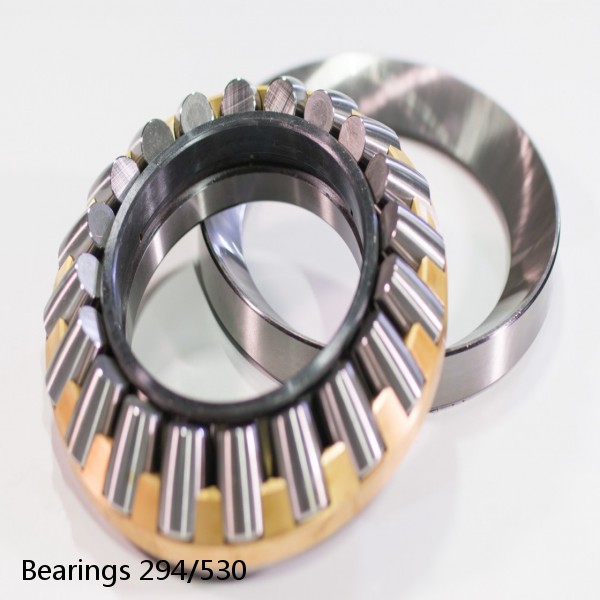 Bearings 294/530
Bearings 294/530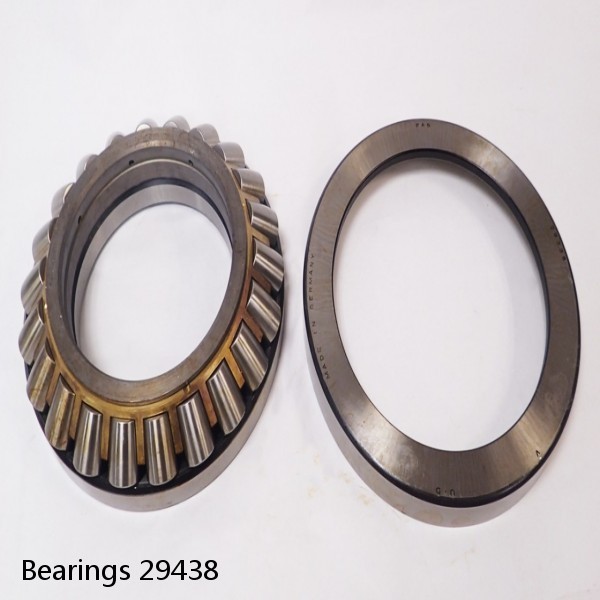 Bearings 29438
Bearings 29438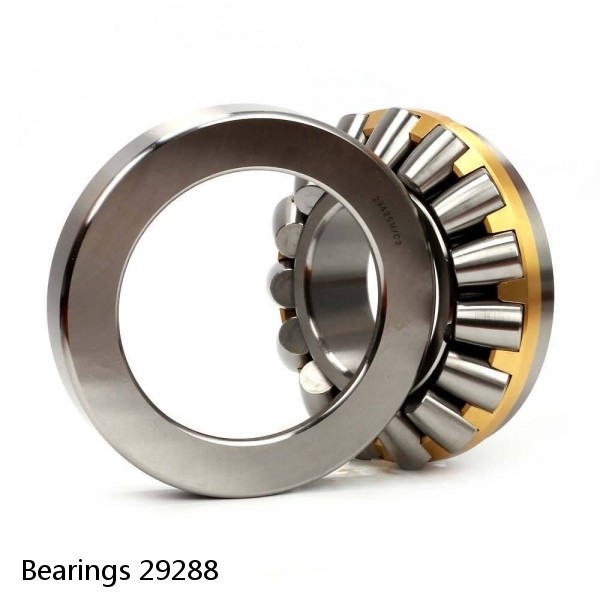 Bearings 29288
Bearings 29288